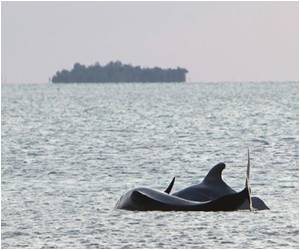
The oceans absorb more than a quarter of anthropogenic carbon dioxide emitted to the atmosphere. They form a natural store without which the Earth would now be a good deal warmer. But their storage capacities are limited and the absorption of carbon dioxide is not without consequence. Carbon dioxide dissolves in water, forms carbonic acid and causes the pH value of the oceans to drop – which affects many sea dwellers. In recent years much research has therefore been conducted on how individual species react to the carbon dioxide enrichment and the acidifying water. So far the overall extent of these changes on marine animals has been largely unknown.
In order to gain an initial overview, Dr. Astrid Wittmann and Prof. Hans-Otto Pörtner from the Alfred Wegener Institute, Helmholtz-Centre for Polar and Marine Research (AWI), surveyed all studies so far conducted which dealt with the consequences of ocean acidification for marine species from five animal taxa: corals, crustaceans, molluscs, vertebrates such as fishes and echinoderms such as starfish und sea urchins. By the end they had compiled a total of 167 studies with the data from over 150 different species. In order to classify these results they used emission scenarios for carbon dioxide on which the world climate report is also based. These scenarios allow to forecast the impacts of different carbon dioxide concentrations in the atmosphere far into the future.
The results of this new assessment are clear. "Our study showed that all animal groups we considered are affected negatively by higher carbon dioxide concentrations. Corals, echinoderms and molluscs above all react very sensitively to a decline in the pH value", says Dr. Astrid Wittmann. Some echinoderms such as brittle stars have lower prospects of survival in carbon dioxide values predicted for the year 2100. By contrast, only higher concentrations of carbon dioxide would appear to have an impact on crustaceans such as the Atlantic spider crab or edible crab. However, the sensitivity of the animals to a declining pH value may increase if the sea temperature rises simultaneously.
Source-Eurekalert









